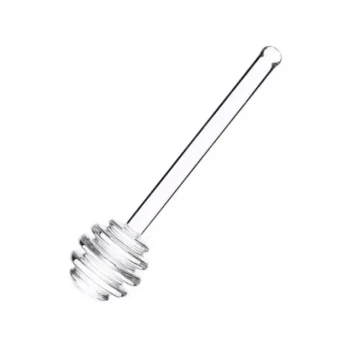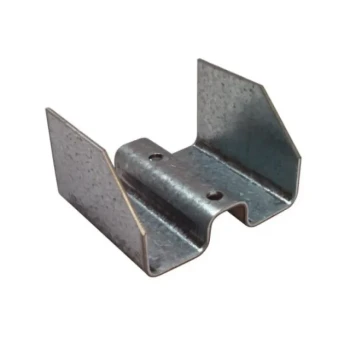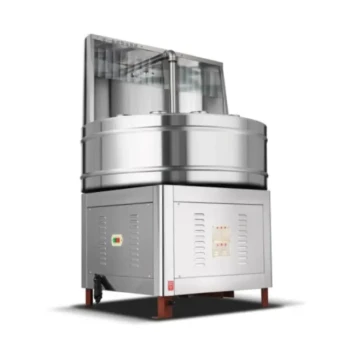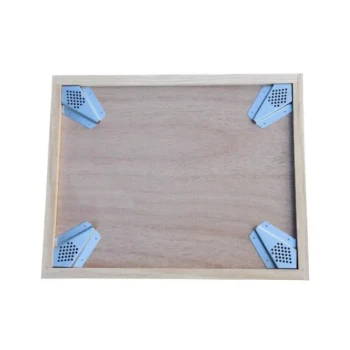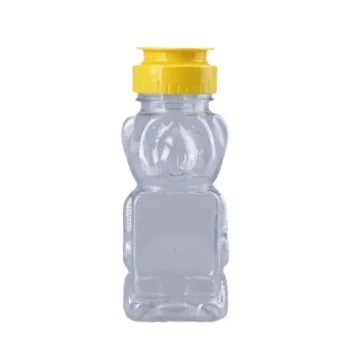In essence, propolis is the honey bee colony's combination of construction caulk and external immune system. Bees create this remarkable substance by collecting resin from trees and mixing it with their own saliva and beeswax. It is then used throughout the hive as a structural sealant to seal cracks and as a powerful antimicrobial agent to defend the colony against pathogens.
Propolis serves a critical dual function: it is both a physical building material used for sealing and reinforcing the hive structure, and a chemical defense mechanism that sterilizes the hive and protects it from disease.
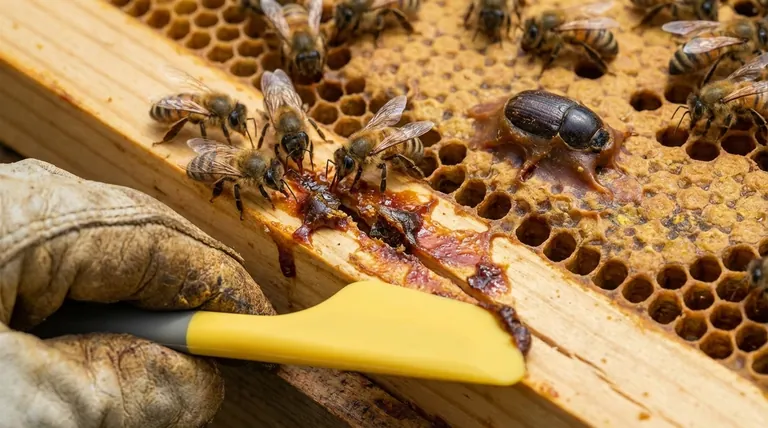
From Tree Resin to Hive Tool: How Propolis is Made
Propolis does not originate with the bee itself. It is a carefully manufactured product that begins with the bees foraging for a very specific raw material outside the hive.
Sourcing the Raw Material
Forager bees collect sticky resin from the buds and wounds of various trees and plants, such as poplars, birches, and conifers. This resin is the plant's own defense mechanism, used to protect itself from insects, bacteria, and fungi.
The Hive's Manufacturing Process
The forager carries the resin on its back legs in a manner similar to pollen collection. Once back at the hive, other worker bees help unload the sticky cargo by biting it off. They then mix this raw resin with beeswax, salivary secretions, and a small amount of pollen to create the final product we know as propolis.
An On-Demand Resource
Unlike honey or pollen, propolis is not stored in large quantities for later use. Bees produce it on an as-needed basis, applying it directly where it's required for a specific structural or hygienic purpose.
The Structural Engineer: Propolis as a Building Material
One of the most visible roles of propolis is its use as an all-purpose construction material, ensuring the hive is secure and stable.
Sealing Cracks and Gaps
Bees use propolis as a sealant or "glue" to fill any unwanted cracks or holes in the hive. This weatherproofing protects the colony from the elements and prevents drafts.
Waterproofing and Smoothing Surfaces
The interior walls of the hive are often coated with a thin layer of propolis. This creates a smooth, waterproof surface that contributes to the overall sanitation and structural integrity of the home.
Defending the Entrance
To make their home more defensible against predators and intruders, bees will often use propolis to reduce the size of the hive entrance. A smaller opening is far easier for guard bees to protect.
The Hive's Immune System: Propolis as a Health Agent
The structural role of propolis is impressive, but its function in colony health is arguably even more critical to survival.
A Powerful Antimicrobial Shield
The primary value of propolis lies in its potent antimicrobial properties, inherited from the tree resins. It acts as a natural disinfectant, fighting off bacteria, fungi, and other microbial pathogens that could otherwise infect the colony.
An Embalming Agent
If an intruder like a mouse or large beetle enters the hive and is killed, the bees may be unable to remove the carcass. To prevent it from decomposing and spreading disease, they will encase it entirely in propolis, effectively mummifying it and neutralizing the threat.
Understanding the Trade-offs
While essential, the production of propolis is not without cost to the colony.
An Energy-Intensive Process
Foraging for and processing resin requires significant time and energy from the worker bees. The creation of propolis is an additional workload that diverts resources from other critical tasks like collecting nectar or pollen.
A Sign of a Thriving Colony
Because of this energy cost, robust propolis production is often a sign of a strong and healthy hive. Weaker colonies may lack the surplus workforce required to gather and apply it effectively, which is why beekeepers only add propolis collection traps to their most thriving hives.
The Two Pillars of Colony Survival
The role of propolis can be understood through its two primary contributions to the colony's success.
- If your primary focus is structural integrity: Propolis is the hive's all-purpose sealant, glue, and fortification material, ensuring a safe and stable home.
- If your primary focus is colony health: Propolis is a broad-spectrum antimicrobial agent, creating a sterile environment and acting as the hive's collective immune defense.
Ultimately, propolis is a testament to the honey bee's resourcefulness, turning a plant's defense system into an indispensable tool for their own survival.
Summary Table:
| Function | Key Action | Benefit to the Hive |
|---|---|---|
| Structural Engineer | Seals cracks, smooths surfaces, reduces entrance size. | Creates a stable, weatherproof, and defensible home. |
| Immune System | Fights bacteria and fungi; mummifies invaders. | Maintains a sterile environment and prevents disease. |
Equip your apiary for success with HONESTBEE.
Understanding the critical role of propolis is key to managing a thriving bee colony. A strong, healthy hive is the foundation of a successful beekeeping operation, whether you're a commercial apiary or a distributor supplying others.
At HONESTBEE, we supply the durable, high-quality beekeeping supplies and equipment that commercial operations and distributors rely on. From hive components that support natural propolis use to the tools needed for efficient management, we help you build a stronger, more productive business.
Ready to strengthen your operation? Contact our wholesale team today to discuss your equipment needs and how we can support your growth.
Visual Guide
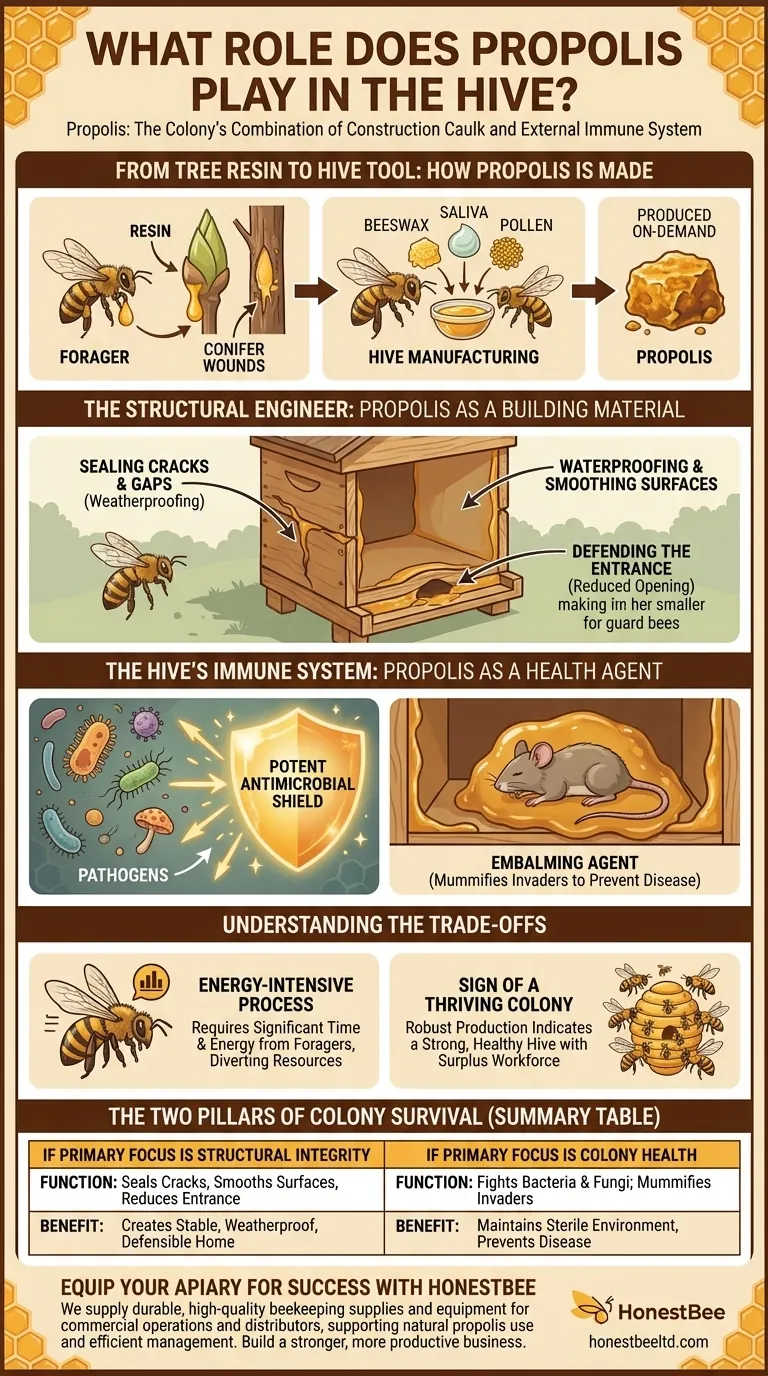
Related Products
- Professional Long-Handled Silicone Honey Scraper for Beekeeping
- Honey Wax Separating Wax Press with Metal Screw Wax Separator Machine
- Stainless Steel Honey Press Wax Press with Tank
- Premium Heat-Resistant Glass Honey Dipper
- Stainless Steel Pail Perch Bucket Bench
People Also Ask
- Why is it important to remove detached honeycomb pieces? Prevent Pests, Disease, and Robbing
- What type of bees are better adapted to certain climatic conditions? Match Bee Strategy to Your Climate for Success
- What tools are available for uncapping honey? A Guide to Choosing the Right Tool for Your Operation
- Why is uncapping necessary in honey harvesting? Unlock Your Honey Yield & Preserve Comb
- What is honey uncapping? The Essential First Step to Harvest Your Honey



